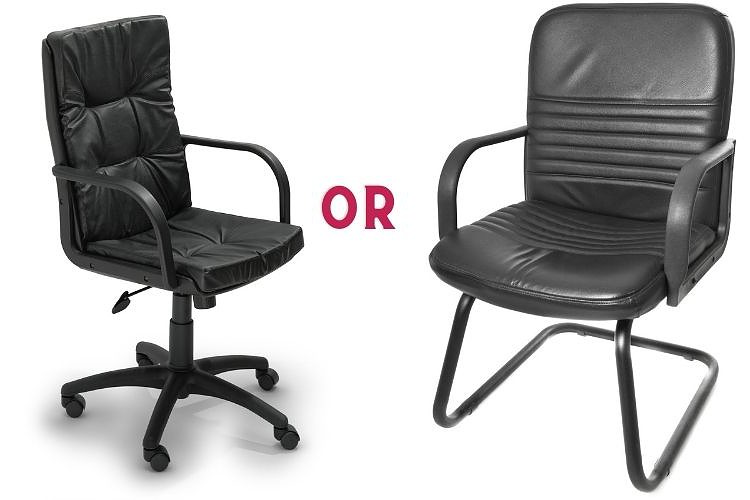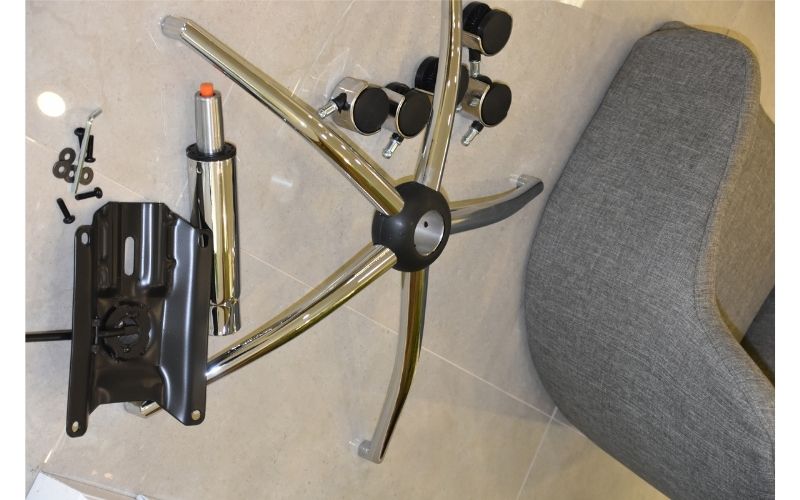Do office chairs need to have wheels? What if you don’t want to have wheels attached to your office chair?
Office chairs don’t have to have wheels especially when you don’t want them to have any. While most office chairs have wheels (or casters) and they’re known to be very helpful in additional mobility, there are certain pros and cons with having them.
It’s a matter of knowing if you want to have office chair wheels or not.
And if you’re unsure about what fits your boat, then let’s talk about why wheels were attached to office chairs in the first place. This way, you’ll understand what it’s for and if you still want to have them.
Table of Contents
Why do office chairs have wheels?

Office chairs have wheels for one primary reason – to increase mobility while you’re in a sitting position.
This concept came from the great Charles Darwin when he placed wheels under his seat to go from one place to another with less time. And from there, Thomas Jefferson created the swivel chair that would later be the chairs we use today.
And as you’ve experienced with swivel chairs (or any chair with casters for that matter), they help you reach to another cabinet, another table, or just anywhere without having to stand up.
If you’re wondering why it has to be five wheels, then it’s because tilting to the back with five wheels is safer compared to tilting with just four wheels under your office chair.
Originally, it was four wheels under an office chair since the casters are just an improvement from your traditional four-legged chair. However, as people realized that the five wheels give better balance and support, office chair legs ended up having five casters.
What are the pros and cons of office chairs without wheels?

There are certain pros and cons in choosing office chairs without wheels.
For the advantage of these types of chairs, the most obvious one is that you’re encouraged to stand and go to the cabinet, coffeemaker, etc.
Another advantage is the price. Since these chairs don’t have casters, they’re generally more affordable than those with wheels.
Moreover, you have fewer parts to replace, clean, and attach. A non-wheeled chair is a more low-maintenance option.
And if you’re placing the chair on a platform, these chairs will be a lot safer. It will be stationary, thus avoiding instances where the chair rolls over the platform.
Of course, there are certain disadvantages to having non-wheeled office chairs.

For one thing, it’s less mobile. If you want to get something, you have to get up, which isn’t the most productive move when you’re working.
The designs of non-wheeled chairs are limited too. This is mainly because there are few movable parts that you can customize.
In most cases, you won’t be able to adjust the height, tilt of the backrest, angle of the armest, and neck rest.
So just like any other office furniture, you have to weigh the pros and cons of non-wheeled office chairs before you purchase one.
Are office chairs without wheels better? Should office chairs have wheels?
There’s no doubt that office chair wheels are one of the best improvements to an office chair. However, this doesn’t mean that office chairs without wheels are inferior.

Just like what was mentioned above, there are certain pros and cons. So what you can do is know what kind of chair you prefer, what you plan to do with your chair, and the type of flooring you’ll place the chair on.
For example, you prefer comfortably rolling from one place to another, or you just like rolling away from your table from time to time. If this is your usual behavior when working, then a wheeled office chair is ideal for you.
On the other hand, if you plan to reinforce standing up, an office chair without wheels is better.
Whether an office chair has wheels or not is entirely up to you. The only better option is the office chair that fits your needs and preferences.
Can you take the wheels off an office chair?
Yes, you can remove the wheels of an office chair, especially when you plan on replacing it.
If you want to replace your office chair casters, all you have to do is remove the casters by pulling them from the legs of your chair.
If this is hard to do, you can use a flathead screwdriver and put it in between the stem and the leg of your chair. Then tilt the screwdriver until the casters get loose.
For casters that use a mounting plate, you just have to unscrew the screws that attach the plate to your chair’s legs.
But what if you want to remove the casters so that you end up with an office chair that doesn’t have any wheels?
While you can always remove the casters, this isn’t advisable since your office chair isn’t made not to have any wheels. If you leave it with the legs bare, the legs will end up scratching against your floors.
Not only will the sound be irritating, but the overall balance of the chair will be affected. Since it’s not initially meant to be wheel-less, it will be unstable to sit on.
I suggest buying an office chair with no wheels instead. This prevents you from falling off an office chair that was meant to have casters.
Conclusion

Office chairs with wheels have been very useful in improving your mobility and productivity when working. However, you can always opt to have non-wheeled office chairs if this is what you prefer.
Non-wheeled office chairs are advantageous if you want to reduce your chair’s maintenance and you want to encourage standing up. But the downside is that it has fewer adjustable parts that will make your working position more ergonomic.
So when you’re choosing if you want an office chair without wheels, don’t forget to consider the pros and cons.

My name is Vance, and I am the owner of To Ergonomics. Our mission is to improve your workflow by helping you create a supportive and welcoming environment. We hope that you’ll find what you’re looking for while you’re here.

